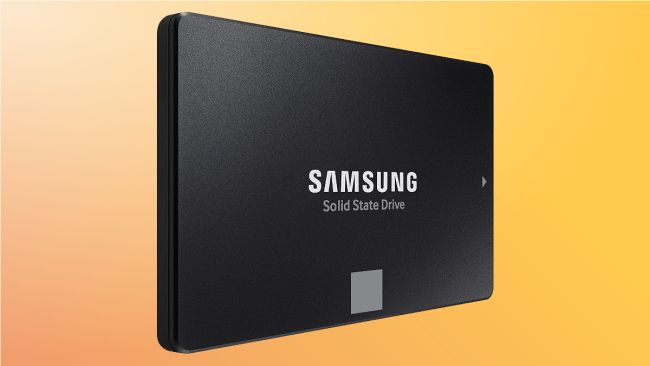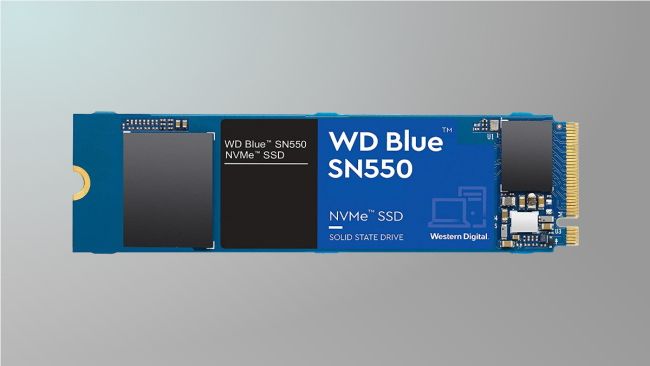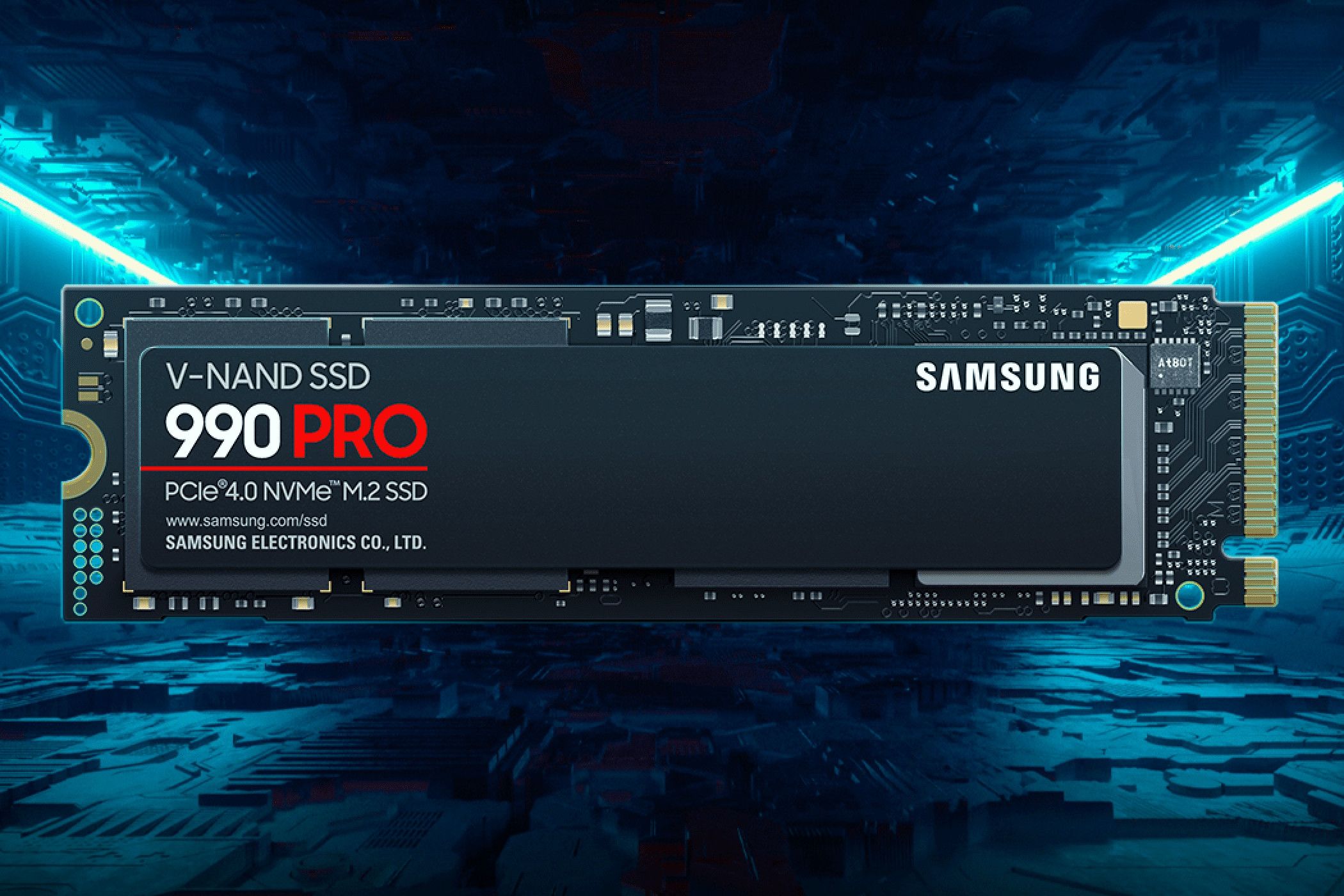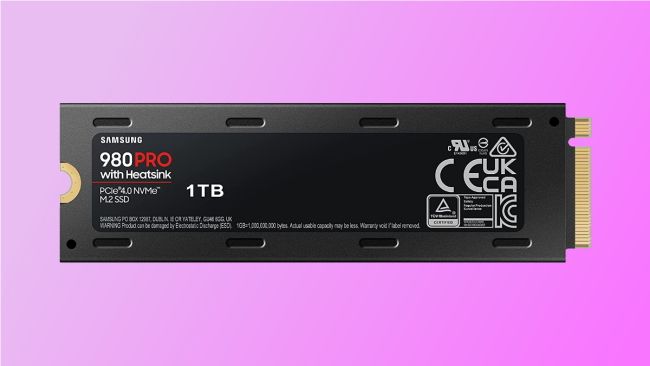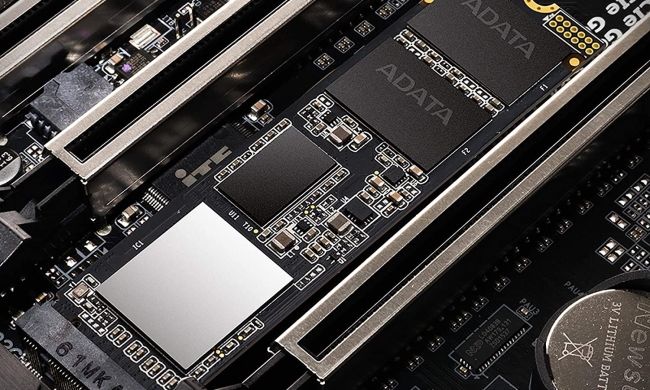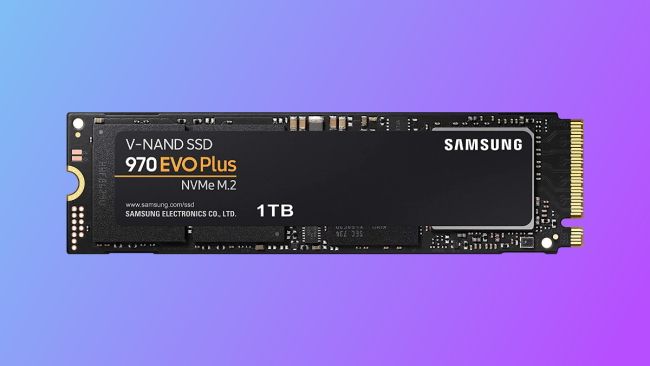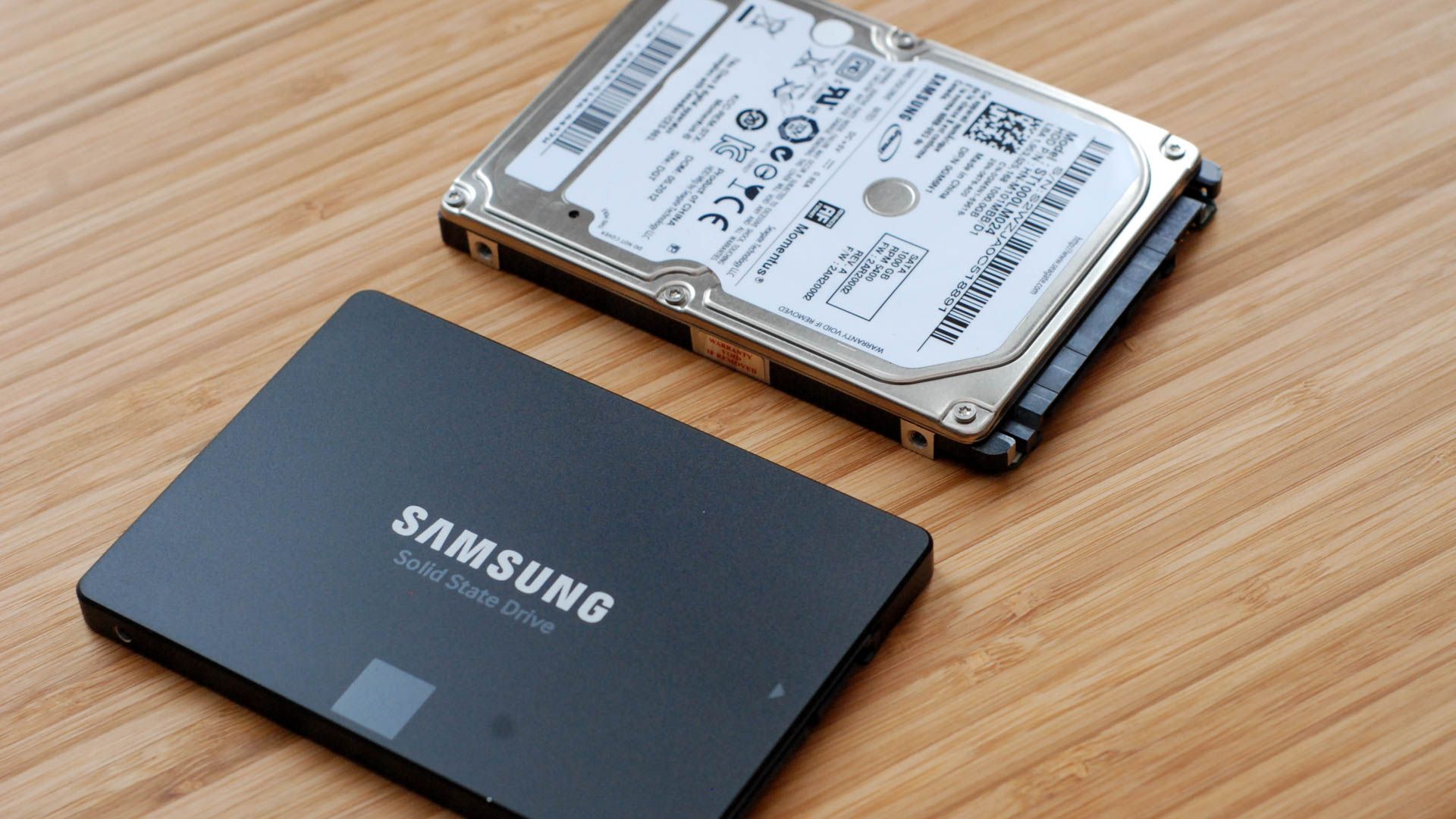
With so many SSDs on the market, picking one that fits both your needs and budget can be a daunting task. We’ve put together a list of the best SSDs out there so you can choose the best one for you.
UPDATE: 11/23/2023
We’ve reviewed our recommendations and these are still the best internal SSDs you can buy.
What to Look For in an Internal SSD in 2023
In recent years, all the rage in internal SSDs is the use of NVMe and PCIe, and while that can significantly impact your PC’s performance, you have to consider your needs before buying the most expensive version of solid-state drives.
For example, if you are not using your PC for anything taxing such as gaming or streaming 4k content, a cheaper, non-NVMe/PCIe SSD is your best option. However, it will use a SATA connector and have a lower theoretical maximum speed than M.2 drives, but it will be cheaper.
Even if you use your SSD for gaming, not all games can benefit from faster read/write speeds, which is the primary boost you’re getting from going the M.2 NVMe or PCIe route. Microsoft has also brought its DirectStorage architecture to Windows 10 and 11, so any compatible games on an NVMe drive will get a massive boost in load speeds.
So, should you go for faster speed/write speeds if you can? That depends—will you be watching 1080p videos and playing retro or indie video games? If this is the case, the move from HDD to SSD will already provide some significant advantages, and you won’t need the additional speed.
On the other hand, if you plan to watch 4k videos, play newer video games, or run production software, faster read/write speeds will be better for you. So if you can spend extra money to get a better read/write speed, definitely go for it.
The only other thing you’ll want to consider is a rating called terabytes written, or TBW. This is essentially the manufacturer’s guarantee that you’ll be able to write that many terabytes to the SSD before it begins to fail.
So, for example, if an SSD has a TBW of 250, you can write 250 terabytes before it can start failing, which, throughout the standard 5-year warranty, means roughly 136GBs written to the SSD per day.
TBW ratings shouldn’t be a concern for most consumers, but as file sizes increase drastically year over year, a lower TBW isn’t that future-proof. This is why you’ll want to aim for an SSD with a size of 1TB or more since TBW is generally tied to size. For example, the median TBW for 1TB SSDs is usually around 600, while a 2TB SSD might go up to 1,200.
Of course, more space means more data that needs to be written, and therefore is it that big a difference? The answer is yes because while you likely never fill up the drive, it’s only going to cost a small amount extra to get the higher space and TBW, making it worth the price for longevity.
With that, let’s get to the best internal SSDs you can buy today.
|
How Did We Research |
||
|
Models Evaluated |
Hours Researched |
Reviews Analyzed |
|
70 |
28 |
83 |
How-To Geek’s product recommendations come from the same team of experts that have helped people fix their gadgets over one billion times. We only recommend the best products based on our research and expertise. We never accept payment to endorse or review a product. Read More »
|
Pros |
Cons |
|---|---|
|
✓ Great read/write speeds |
✗ SATA speeds still not as great compared to PCIe |
|
✓ AES 256-bit encryption |
✗ Not DirectStorage compatible |
|
✓ Excellent SSD management software |
Being one of the big players in the SSD game, it’s probably no surprise to see Samsung at the top of the list.
While the Samsung 870 EVO is still a SATA SSD, it’s able to hit up to a pretty respectable 560 MBs read and write speeds, which should be enough for most use cases. It’s also rated for 2,400 TBW and comes paired with a 5-year warranty, so you should be covered for a long time.
What’s interesting about the Samsung 870 EVO is that while it doesn’t do as well on copy and pasting as other SSDs, it manages to outshine quite a few when it comes to things such as booting Windows and loading games. Clearly, Samsung has put a lot of effort towards the latter set than the former, which is great if you do a lot of gaming.
What sets the Samsung 870 EVO apart though is that while it is a SATA SSD, it still manages to have excellent performance for a pretty reasonable price. As a SATA drive, though, the 870 EVO is not compatible with DirectStorage. If you’re looking for an SSD for gaming, you’ll want another drive.
As for sizes, they come in a range of 250GB, 500GB, 1TB, 2TB, and 4TB, with the last one being quite impressive for a 2.5-inch form factor.
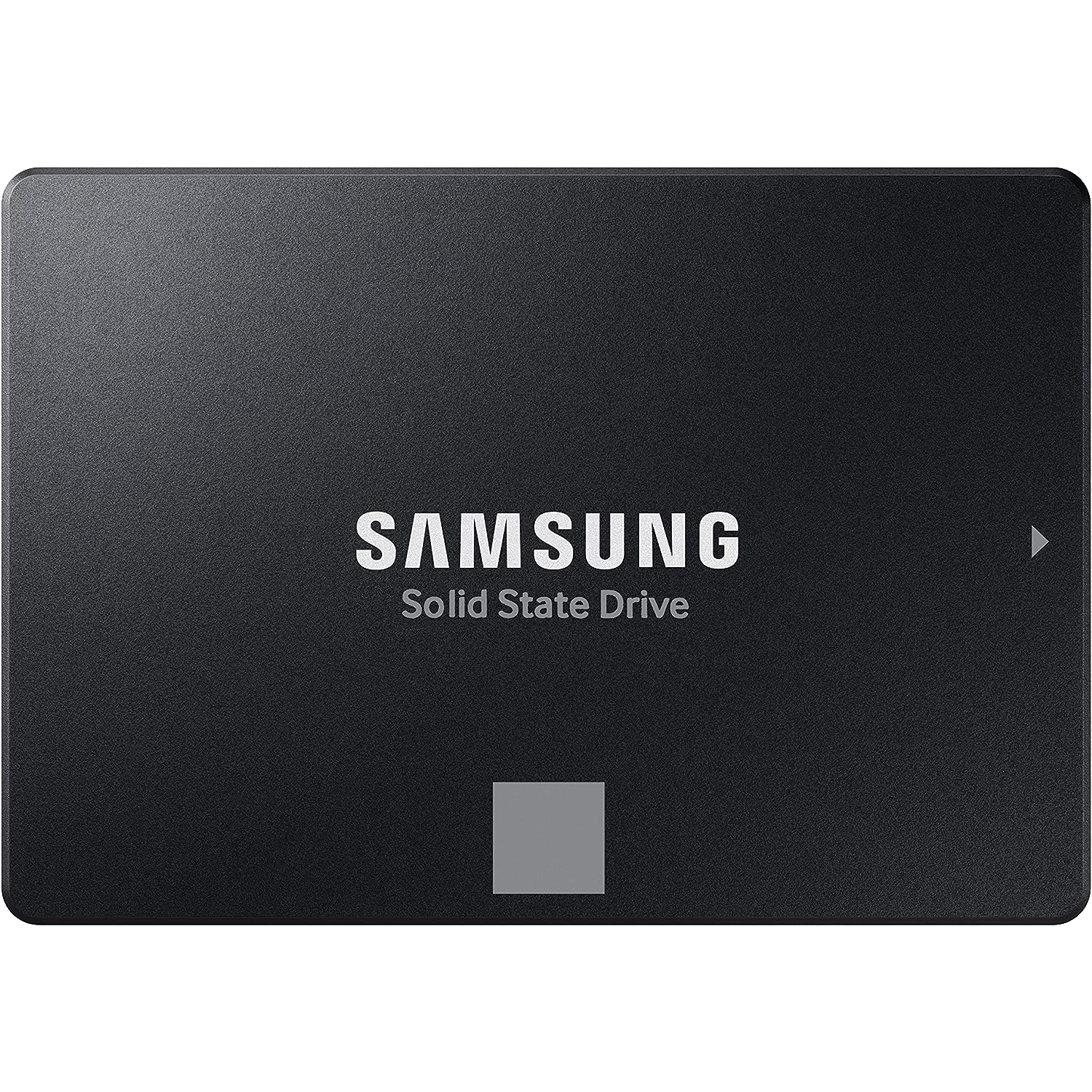

Samsung 870 EVO
Best Internal SSD Overall
$60 $68 Save $8
Having respectable speeds and performance while being SATA is pretty tricky, but the Samsung 870 EVO hits it out of the park while still being budget-friendly.
|
Pros |
Cons |
|---|---|
|
✓ Excellent pricing |
✗ Biggest size is 1TB |
|
✓ Comparatively good performance |
✗ Relatively small SLC cache |
|
✓ Single-sided PCB |
✗ Sustained write speed could be better |
|
✓ 5-year warranty |
Like Samsung, Western Digital has been in the storage game for ages. As such, the Blue line of WD drives such as the SN550 have a solid reputation for good performance at a low price.
This budget SSD has some pretty good speeds, being rated to do 2,600 MB/s read speed. Being an NVMe drive, it’s also DirectStorage compatible. However, real-world performance is slightly slower, and it doesn’t do as well with sustained write speeds.
If performance is an issue for you, you can always go for the SS570, which is only slightly more expensive and can manage a pretty respectable 3,500MB/s read speed.
In terms of lifespan, the SN550 gets a 5-year warranty, and it’s rated up to 900 TBW, so it should last you a while. It also manages to be cooler than the previous iteration, and the less hot a piece of electronics runs, the longer it’s going to last.
Ultimately, the SN550 is a great internal SSD if your budget is tight.
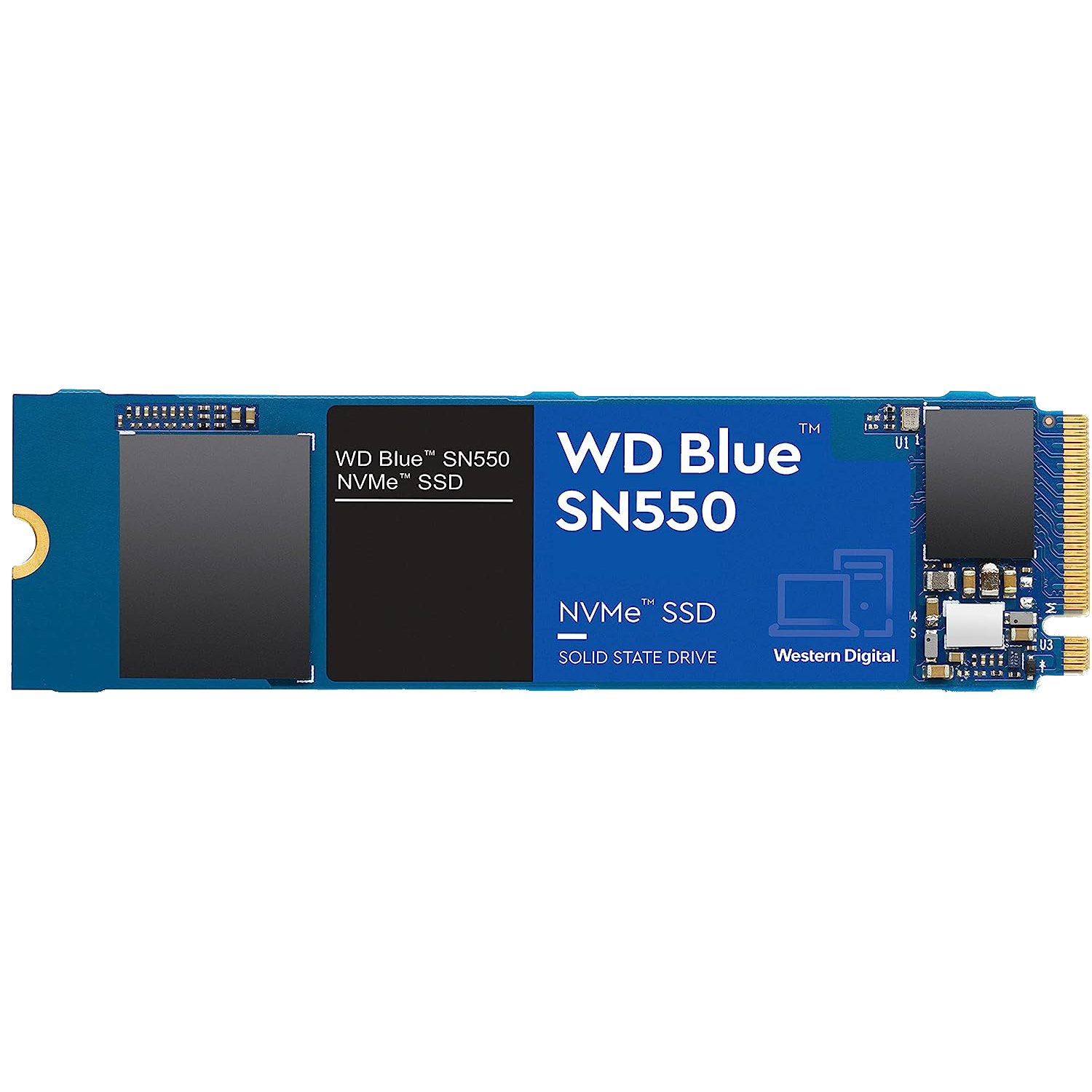

WD Blue SN550 NVMe Internal SSD
Best Budget Internal SSD
$119 $125 Save $6
While the SN550 is a budget SSD, it still manages some excellent performance for a great price and is perfect for mainstream or general usage.
|
Pros |
Cons |
|---|---|
|
✓ Excellent power efficiency |
✗ Expensive for the 2TB and 4TB Versions |
|
✓ High read/write speeds for PCIe 4 |
✗ Fairly low TBW of 600 |
|
✓ Heatsink and RGB lighting looks good |
|
|
✓ Compatible with PlayStation 5 |
Samsung has built a great reputation for producing fast, efficient, and reliable solid-state drives, and the 990 Pro is no exception. It might not be the cheapest PCIe 4 SSD option around, especially if you go for the 2 TB or 4 TB versions with heatsink, but when you consider the Samsung pedigree and its impressive list of features, the price seems fair.
With read speeds of up to 7450 MB/s and write speeds of 6900 MB/s, the 990 Pro is more than quick enough to handle modern gaming requirements. It has also been redesigned to be as much as 50% more energy efficient than the 980, making it a very attractive option for use in laptops or, thanks to its thin form factor, your PS5.
The Samsung Magician software is excellent, giving you full control over the RGB on the heatsink, diagnostics, firmware updates, and the ability to securely erase and unlock encrypted drives. If you want to tweak performance, that’s also easy from the user-friendly interface.
If we were to pick fault with the 990 Pro, aside from the fact that it isn’t PCIe 5, it would be with the TBW (Total Bytes Written) rating of 600 on the 1TB version. That’s not terrible, and it doubles for the 2TB version, but there are certainly SSDs that provide better.
If you’re looking for a fast and reliable NVMe M.2 SSD to speed up loading times and boost performance in your favorite games, and don’t mind opting for a PCIe 4 SSD, the Samsung 990 Pro is an impressive storage solution.
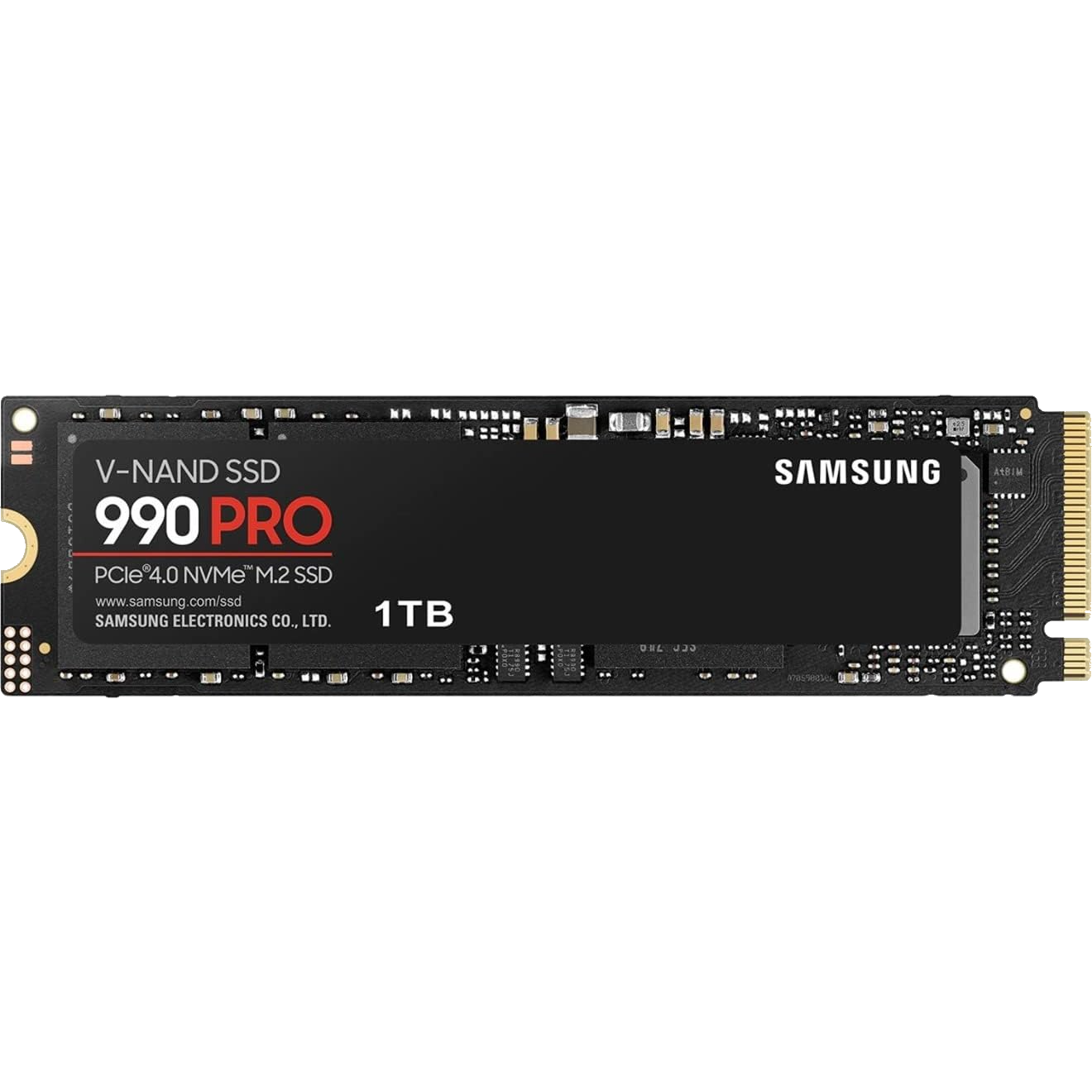

Samsung 990 Pro SSD 1TB
Best Internal SSD for Gaming
$80 $170 Save $90
The 990 PRO is a fast, power-efficient, and reliable M.2 SSD from Samsung that will give a storage boost to anything from your gaming desktop to your laptop or even a PS5. You can even choose the RGB heatsink version for extra cooling power and a bit of bling.
|
Pros |
Cons |
|---|---|
|
✓ AES 256-bit encryption |
✗ High cost per GB |
|
✓ Excellent performance |
✗ Endurance is pretty average for the price |
|
✓ Heatsink is aestheticall pleasing |
It’s no surprise that both Samsung and Western Digital are dominating this market, so you’ll know that when talking about the Samsung 980 PRO SSD, it’ll be a pretty powerful DirectStorage-compatible NVMe SSD.
Regarding speeds, it’s rated at 7,000MBps, and real-world performance gets pretty close to that. This speed is only reachable when connected to a PCIe 4.0 compatible motherboard, so without one, you’re seeing only about half of those speeds. If your motherboard is compatible, though, this upgrade is worth it.
Of course, all of this speed and power come at a high thermal price, so we strongly suggest getting the version that comes with a heatsink. This will help with performance, but it will also help extend the SSD lifetime due to thermal fatigue. The version without the heatsink is $20 less, but the savings isn’t worth your electronics heating up and burning out.
Finally, you get a 5-year warranty as well as 600 TBW, so it has pretty good coverage in terms of the 980 PRO’s lifetime.
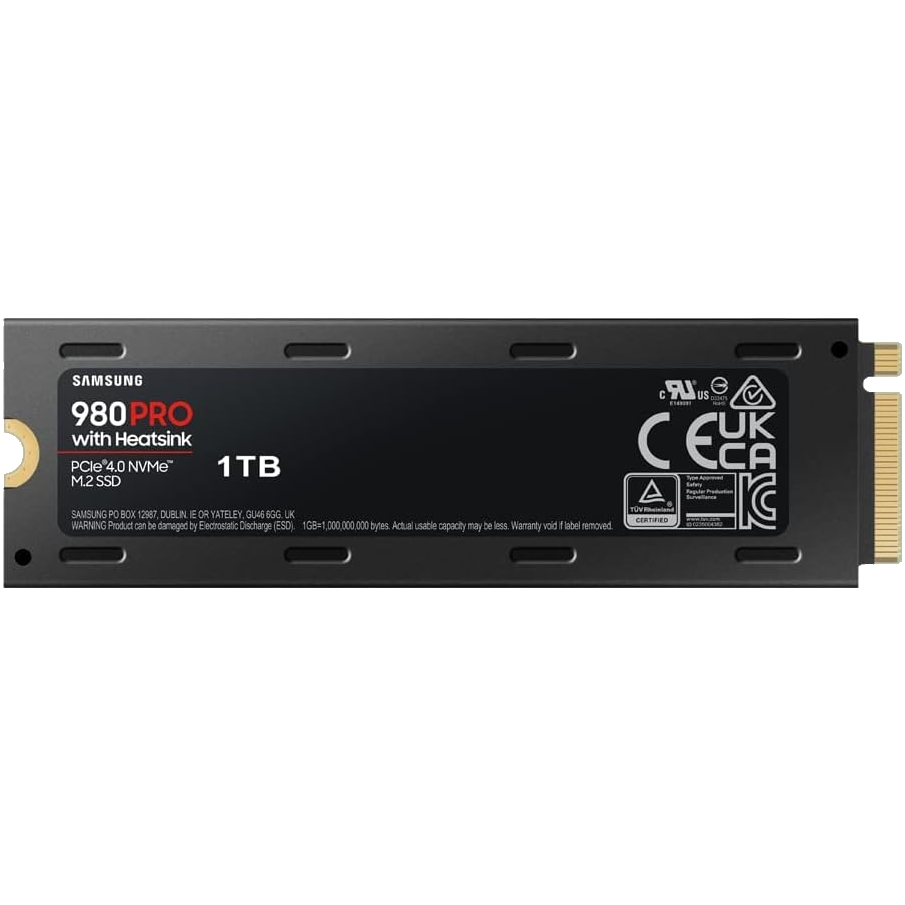

Samsung 980 PRO SSD with Heatsink
Best Internal NVMe SSD
Balancing overall solid performance relative to competitors, the 980 Pro is a great SSD for PCIe 4.0 builds.
|
Pros |
Cons |
|---|---|
|
✓ Great price per GB |
✗ Sequential write performance is rather lackluster |
|
✓ Relatively good performance |
|
|
✓ Good sequential read performance |
If you’re going for a computer with PCIe 3, then you don’t need to spend a ton of money on an SSD that supports PCIe 4. Instead, you can go for something like the XPG SX8200 Pro, which is much cheaper per GB while still providing relatively strong performance.
In terms of pure numbers, sequential read performance can get up to 3,000 MB/s, which should be more than enough for most people. On the other hand, sequential write speeds leave a little bit to be desired, only coming in at 1,750 MB/s.
That being said, the SX8200 Pro can do around 400 MB/S of random access read, so it all depends on what you value the most. Granted, for the majority of users, that’s going to be the sequential read performance.
On the bright side, this SSD has a slightly higher TBW of 640 for the 1TB version and the standard 5-year warranty. In short, the longevity is pretty good. ADATA’s SSD is also DirectStorage compatible, meaning it’s future-proof in terms of software support.
Finally, the 8200 Pro comes with a nice-looking cover if you’re working with a case you can see into. Aesthetics are important if you’re showing off your build, after all!
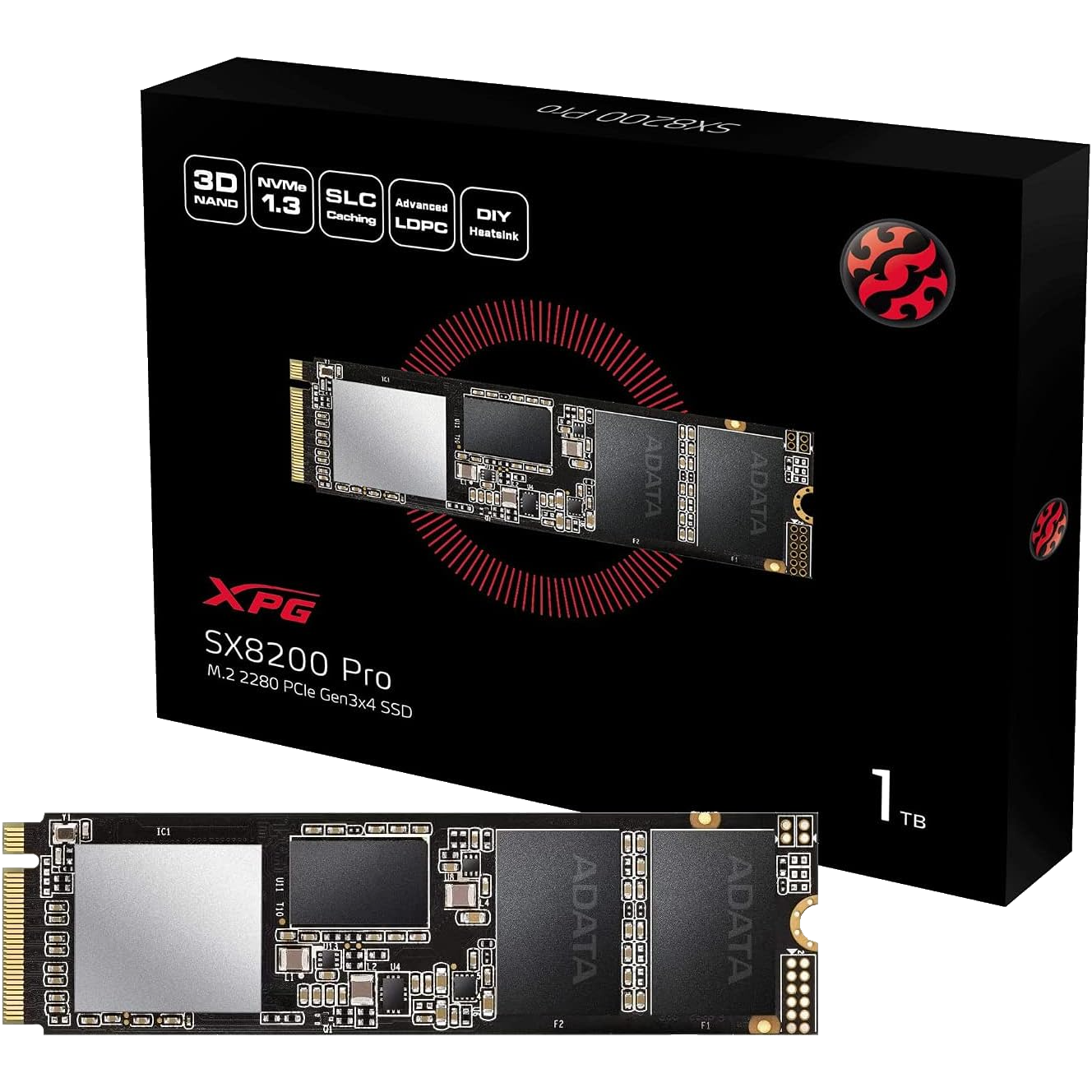

XPG SX8200 Pro
Best Internal M.2 SSD
The XPG SX8200 Pro is probably one of the better PCIe 3 cards that you’re going to find out there, especially given its great performance and excellent price per GB.
|
Pros |
Cons |
|---|---|
|
✓ Excellent performance |
✗ Isn’t as efficient as some competitors |
|
✓ Using Samsung SSD management software |
|
|
✓ Great pricing |
The 970 EVO Plus is the ‘go-to’ PCIe SSD suggestion, and for good reason. Not only does it have great performance, but it’s also low-cost per GB and comparable to the XPG SX8200 Pro, our M.2 SSD pick. In addition, it’s DirectStorage compatible.
Regarding performance, the 970 EVO plus is rated up to 3,500 MB/s, and it manages to hit that in real-world performance for sequential read speeds. Sequential write speeds are also pretty good, with real-world performance speeds at 3,000 MB/s or higher. This is almost double the write speeds of the SX8200 Pro.
Other transfer tests such as small files or 4k aren’t as impressive, although that’s normal when it comes to any hard drive. So, for example, when it comes to 4k, you’ll probably see around 300MB/s on average, which is more than enough not to notice any issues while watching 4k films or shows.
You should be aware that the 970 EVO Plus does have a bit of thermal throttling when it runs for a long time, although that shouldn’t impact you on a day-to-day basis.
As for long-term endurance, the 970 EVO Plus has the industry standard with a 600 TBW and 5-year warranty. That being said, it’s rare to experience issues with modern Samsung SSDs, so it’ll be sure to last.
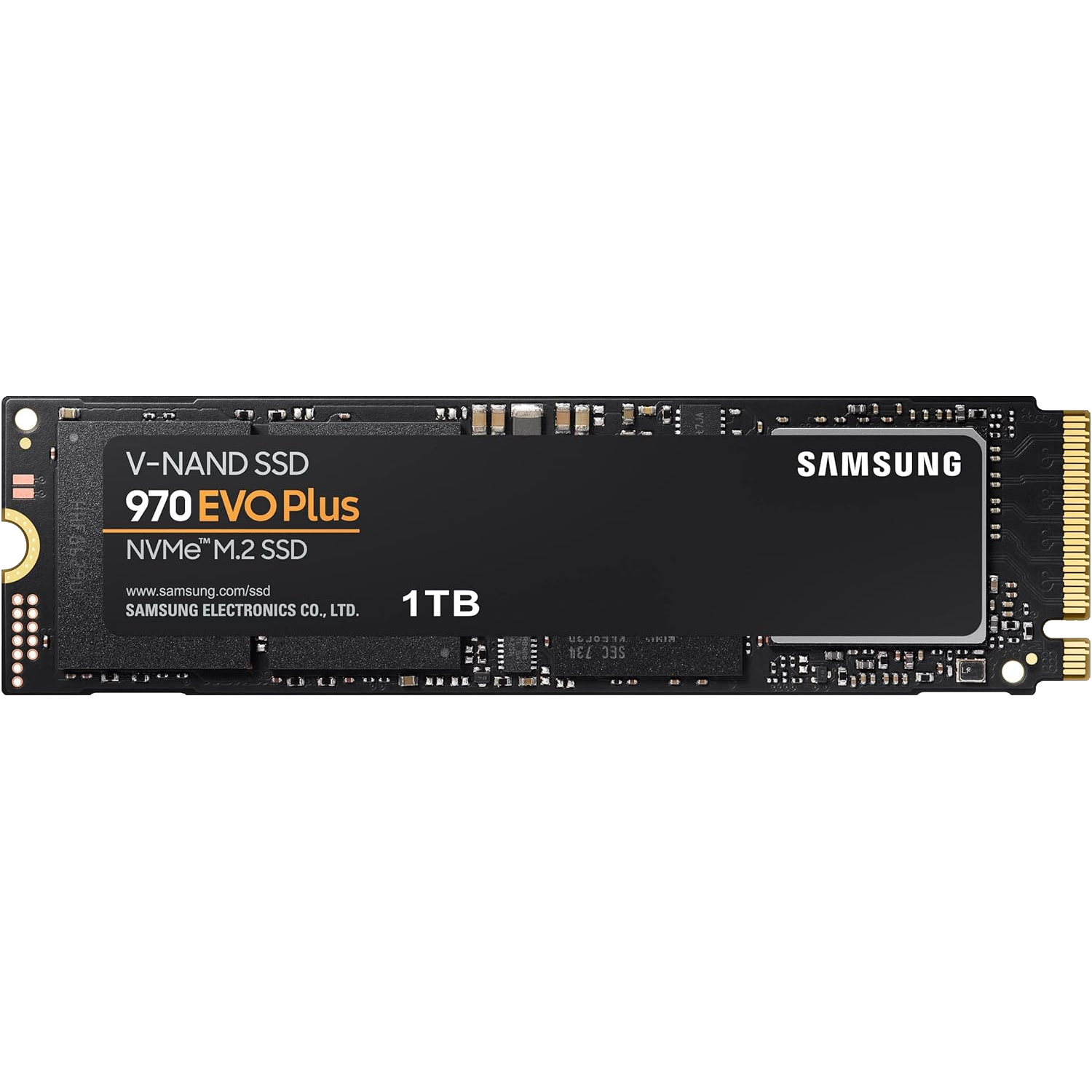

Samsung 970 EVO Plus
Best internal PCIe SSD
With some of the best PCIe 3.0 speeds around, the 970 EVO Plus is an excellent alternative to the SX8200 Pro.
FAQ
How do you install an internal SSD into a computer?
Internal M.2 SSDs should be fitted into a small socket on the motherboard, labeled “M.2”. The end of the SSD with the exposed contacts is pushed into the socket, with the drive held at a slightly sloped angle. When firmly inserted, the SSD can be pressed down flat and held in place with a clip or screw.
Is it better to use an internal or external SSD?
Both internal and external SSDs have pros and cons. Internal SSDs are generally faster due to their more direct connection to the motherboard, and often better value for money. External SSDs have the benefit of being highly portable and can be used with multiple devices.
What’s the difference between a HDD and an SSD?
HDD stands for Hard Disk Drive and refers to older optical drives with moving parts and a spinning data storage disk. SSD stands for Solid State Drive, which have no moving parts and instead store data on solid semiconductor cells. SSDs are much smaller and much more efficient than HDDs.
Can you use an internal SSD as an external one?
Yes, but you will need to buy an SDD enclosure that fits around the internal drive and converts the SATA or M.2 connector to USB. You can then connect the drive externally to your computer.

